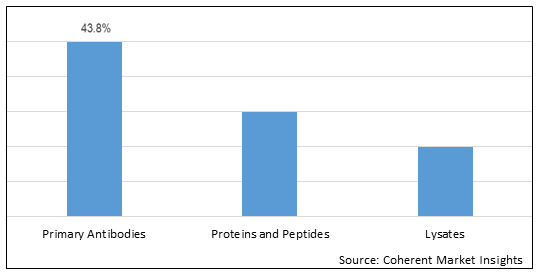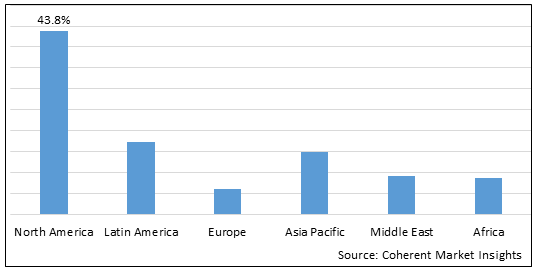Anti Cathepsin B Market is estimated to be valued at USD 199.2 Mn in 2025 and is expected to reach USD 248.3 Mn in 2032, exhibiting a compound annual growth rate (CAGR) of 3.2% from 2025 to 2032.
Analysts’ views on the Global Anti-Cathepsin B Market:
Cathepsin B has gained much attention due to its attributed role in cancer progression. Multiple human cancer cell lines and all stages of carcinogenesis, including initiation, angiogenesis, invasion, and metastasis, have shown enhanced activity of this protein. Preproenzyme cathepsin B is created and then converted to its active form by removing the propetide through acid-mediated auto-processing or by other lysosomal proteases, resulting in mature cathepsin B. The precise function of cathepsin B in the tumor microenvironment has remained unknown despite significant advancements in understanding its biology. This is largely due to the multiple proteases' intricate interactions with one another, other protein molecules, and other enzymes, which have a wide range of negative effects.
Figure 1. Global Anti-Cathepsin B Market Share (%), By Product Type, 2025

To learn more about this report, Download Free Sample
Global Anti-Cathepsin B Market- Drivers
Increasing research in anti cathepsin B market
Increasing research in anti cathepsin B market is expected to drive the global anti-cathepsin b market growth over the forecast period. For instance, on May 5, 2021, OAE Publishing Inc., multidisciplinary publishing company based in the U.S., explained the structure-activity connection of a number of newly developed auranofin derivatives was examined in this in silico investigation with reference to their cathepsin B inhibitory action. A set of well-known cathepsin B inhibitors was used to construct and test a thorough molecular screening model. During the preliminary phase of the biological screening of recently developed inhibitors, its validity was further examined. A series of subsequent in silico predictions of compound inhibitory activity were generated, which led to new structures with increased inhibitory activity and selectivity towards cathepsin B. These predictions were based on the structure-function relationships discovered by recording the empirical score values generated for the screening model.
Figure 2. Global Anti-Cathepsin B Market Value (US$ Million), By Region, 2023

To learn more about this report, Download Free Sample
Global Anti-Cathepsin B Market- Regional Analysis
Among regions, North America is estimated to hold a dominant position in the global anti-cathepsin B market over the forecast period, owing to increasing research and development in anti-cathepsin B. For instance, on November 11, 2020, Spandidos Publications announced in stem-like cells from pancreatic cancer, cathepsin B is strongly expressed and is linked to surgical success in patients. Western blotting was used to demonstrate that the lysosomal cysteine protease cathepsin B (CTSB) was highly elevated in PCSLCs in comparison to that in the parental cells. Additionally, flow cytometry research proved that PCSLCs' surface expression of CTSB was higher than that of parental cells. Additionally, compared to the parental cells, PCLCs secreted more CTSB from their cells. In 69 resected tumor specimens, CTSB expression was assessed, and high expression was related to the clinicopathological characteristics of the patients and surgical results.
Global Anti-Cathepsin B Market- Impact of Coronavirus (COVID-19) Pandemic
Since the COVID-19 virus outbreak in December 2019, the disease has spread to over 100 countries across the globe, and the World Health Organization (WHO) declared it a public health emergency on January 30, 2020.
COVID-19 affected the economy in three main ways: by directly affecting the production and demand of drugs, by creating disruptions in distribution channels, and through its financial impact on firms and financial markets. Due to nationwide lockdowns, several countries, such as China, India, Saudi Arabia, the U.A.E., Egypt, and others, faced problems regarding the transportation of drugs from one place to another.
COVID-19 had a negative impact on the global anti-cathepsin B market. For instance, on December 8, 2020, PLOS, U.S based publisher, published the entry of SARS-CoV-2 that impacted cathepsin B into target cells requires the activation of its surface spike protein, S, by host proteases. The host serine protease TMPRSS2 and cysteine proteases Cathepsin B/L can activate S, making two independent entry pathways accessible to SARS-CoV-2. Blocking the proteases prevents SARS-CoV-2 entry in vitro. This blockade may be achieved in vivo through ‘repurposing’ drugs, a potential treatment option for COVID-19 that is now in clinical trials. Here, found that drugs targeting the two pathways, although independent, could display strong synergy in blocking virus entry. Predicted this synergy first using a mathematical model of SARS-CoV-2 entry and dynamics in vitro. The model considered the two pathways explicitly, let the entry efficiency through a pathway depend on the corresponding protease expression level, which varied across cells, and let inhibitors compromise the efficiency in a dose-dependent manner.
Anti-Cathepsin B Market Report Coverage
| Report Coverage | Details | ||
|---|---|---|---|
| Base Year: | 2024 | Market Size in 2025: | USD 199.2 Mn |
| Historical Data for: | 2020 To 2024 | Forecast Period: | 2025 To 2032 |
| Forecast Period 2025 to 2032 CAGR: | 3.2% | 2032 Value Projection: | USD 248.3 Mn |
| Geographies covered: |
|
||
| Segments covered: |
|
||
| Companies covered: |
Merck KGaA, Bio-Techne, BioVision Inc, Santa Cruz Biotechnology, Inc, MedChemExpress, BioCat GmbH, ApexBio Technology, Cayman Chemical, Selleck Chemicals, BOC Sciences, AG Scientific, Virobay Inc, Abcam Plc |
||
| Growth Drivers: |
|
||
| Restraints & Challenges: |
|
||
Uncover macros and micros vetted on 75+ parameters: Get instant access to report
Global Anti-Cathepsin B Market Segmentation:
The global anti-cathepsin B market report is segmented into product type, application, technique, end user, and region.
Based on product type, the global anti-cathepsin B market is segmented into primary antibodies, proteins and peptides, and lysates. Out of which, the antibodies segment is expected to dominate the market due to increasing research and development in drugs.
Based on application, the global anti cathepsin B market is segmented into cancer, traumatic brain injury, ebola infection, fertility treatment, others. Among these, the cancer segment is expected to dominate the market over the forecast period due to the increasing number of cancer patients and research related to cancer.
Based on technique, the global anti cathepsin B market is segmented into immunohistochemistry, immunofluorescence, western blotting, elisa, flow cytometry, and others. Out of which, the immunohistochemistry segment is expected to dominate the market over the forecast period due to advanced research and development in immunological disease.
Based on end user, the global anti cathepsin B market is segmented into pharmaceutical companies and academic and research institutes. Out of which, the pharmaceutical companies segment is expected to dominate the market over the forecast period due to usage to develop new products based on anti-cathepsin B.
Based on region, the global anti-cathepsin B market is segmented into North America, Latin America, Europe, Asia Pacific, Middle East, and Africa. Among these, North America is expected to dominate the market over the forecast period due to increased research and development activities.
Global Anti-Cathepsin B Market: Key Developments
On April 13, 2023, Bio-Techne Corporation ,a company develops, manufactures and sells life science reagents, instruments and services for the research announced it will present its portfolio of products and solutions to advance cancer research and enable cell and gene therapy development and manufacturing at the upcoming annual meeting of the American Association for Cancer Research (AACR), taking place April 14-19 in Orlando, Florida. Bio-Techne's booth will feature its wide range of products, services and capabilities that enable cancer research and discoveries as well as cell and gene therapy development and workflow solutions including its industry-leading portfolio of reagents, immunoassays, proteomic analytical instruments, spatial biology solutions, and companion diagnostics capabilities.
On April 24, 2020, Elsevier B.V. announced that engineered human cathelicidin antimicrobial peptides inhibit ebola virus infection. Ebola VLPs were produced by co-expressing the EBOV matrix protein, VP40 (fused to β-lactamase), and the EBOV GP. Vero cells were pre-treated with AMPs (or cathepsin B inhibitor CA-074 methyl ester (at 50 μM as a positive control) for 1 h at 37°C and then infected with Ebola VLPs. At 4 h post-infection, a membrane-permeable β-lactamase substrate (CCF-2 AM) was added to the culture and incubated for 1 h at room temperature.
Global Anti-Cathepsin B Market: Key Trends
Introduction of new research in anti-cathepsin B
The introduction of new research in anti-cathepsin B can drive market growth. On April 3, 2023, MDPI, Switzerland-based publisher, explained cathepsin B tends to be overexpressed in many cancer cells, hence its inhibitors may be useful as anticancer medications. It was anticipated that the newly developed self-assembled cathepsin B inhibitor would be able to get around the restrictions that now exist for cytotoxic medicines used in cancer treatment. The hydrophilic peptide sequence of Arg-Arg (RR), which is unique to cathepsin B, was conjugated directly to the hydrophobic ursodeoxycholic acid (BA) in order to create a peptide-based biomolecule that could bind to cathepsin B. Due to ursodeoxycholic acid's safety and US-FDA approval as a medicine, this was able to create a peptide-drug conjugate (PDC). Ethylamide (NHEt) inhibited the carboxylic end of the RR peptide to stop unneeded side effects.
Global Anti-Cathepsin B Market: Restraints
Complications associated with anti-cathepsin B
Complications associated with anti-cathepsin B can hamper the growth of the market. For instance, John Wiley & Sons, Inc, a publishing company published on January 28, 2020 cathepsin B, a major lysosomal protease, displays both endopeptidase and carboxypeptidase activity. The authors showed that Z-Phe-Arg, Z-Phe-Lys, and Z-Val-Lys dipeptides were used in doxorubicin-based prodrugs, which caused cathepsin B to quickly activate them. However, because arginine and lysine at the P1 position of the protease substrate are excellent targets for a variety of proteases, the authors substituted citrulline (Cit) in place of the Arg/Lys residue. Both prodrugs hydrolyzed equally quickly in rat lysosomal extracts, despite the fact that cathepsin B hydrolyzed the Z-Val-Cit prodrug significantly more slowly than its Z-Val-Lys analog did. This suggested that Val-Cit hydrolysis may involve proteases other than cathepsin B. Therefore, it is crucial to examine the substrate specificity for other proteases that share the same localization and may therefore contribute to unintentional prodrug activation while developing novel peptide linkers.
To counterbalance this restraint, a mechanism of the anti-cathepsin B should be demonstrated in a simple way.
Global Anti-Cathepsin B Market- Key Players
The major players operating in the global anti-cathepsin B market include Merck KGaA, Bio-Techne, BioVision Inc., Santa Cruz Biotechnology, Inc, MedChemExpress, BioCat GmbH, ApexBio Technology, Cayman Chemical, Selleck Chemicals, BOC Sciences, AG Scientific, Virobay Inc., Abcam Plc.
Global Anti-Cathepsin B Market- Definition
Cathepsin B is a member of the papain-like family of cysteine proteases and is synthesized as a preproenzyme of 339 amino acids with a calculated molecular weight of approximately 38 kDa.Cathepsin B is a bilobal protein with its catalytic site located at the interface between the two lobes. The amino acids cysteine, histidine, and aspartic acid comprise the catalytic triad of the enzyme, with cysteine on the left lobe interacting with histidine on the right lobe to catalyze peptide bond cleavage.
Share
Share
About Author
Abhijeet Kale is a results-driven management consultant with five years of specialized experience in the biotech and clinical diagnostics sectors. With a strong background in scientific research and business strategy, Abhijeet helps organizations identify potential revenue pockets, and in turn helping clients with market entry strategies. He assists clients in developing robust strategies for navigating FDA and EMA requirements.
Missing comfort of reading report in your local language? Find your preferred language :
Transform your Strategy with Exclusive Trending Reports :
Frequently Asked Questions
Select a License Type
Joining thousands of companies around the world committed to making the Excellent Business Solutions.
View All Our Clients